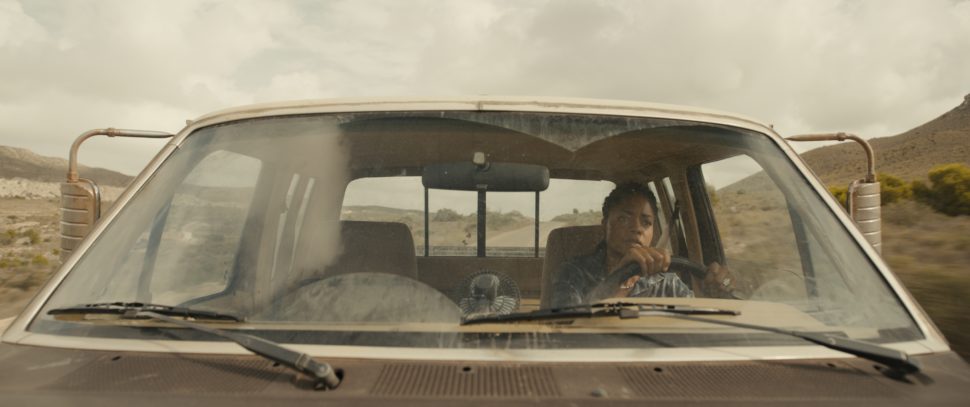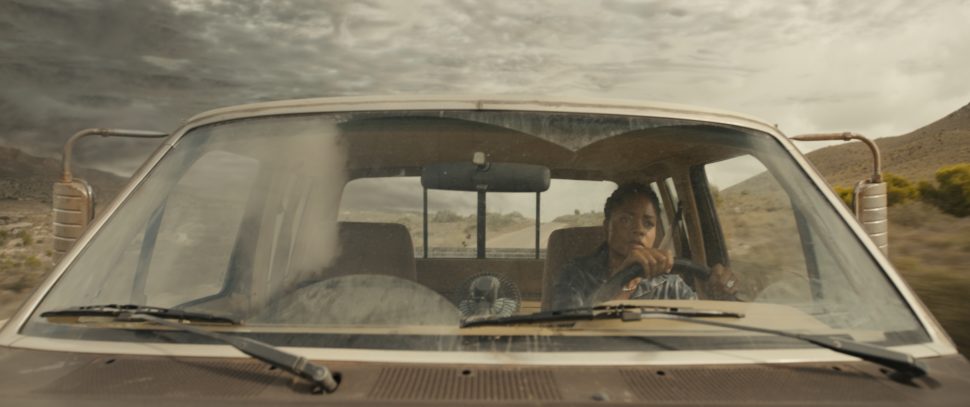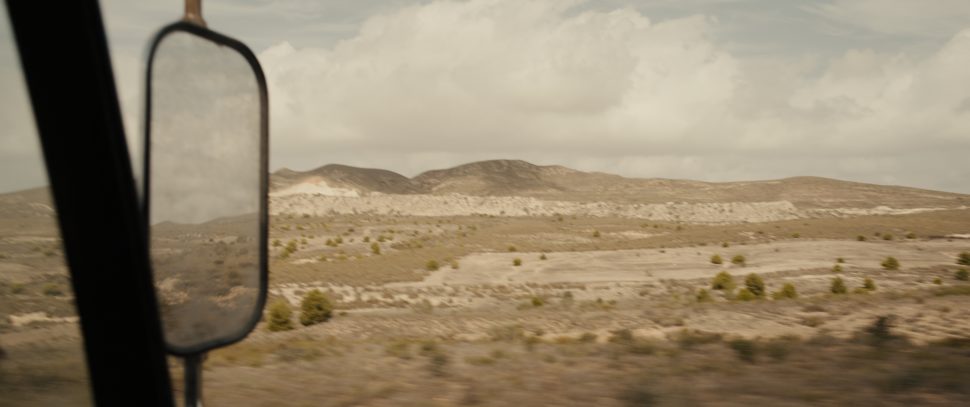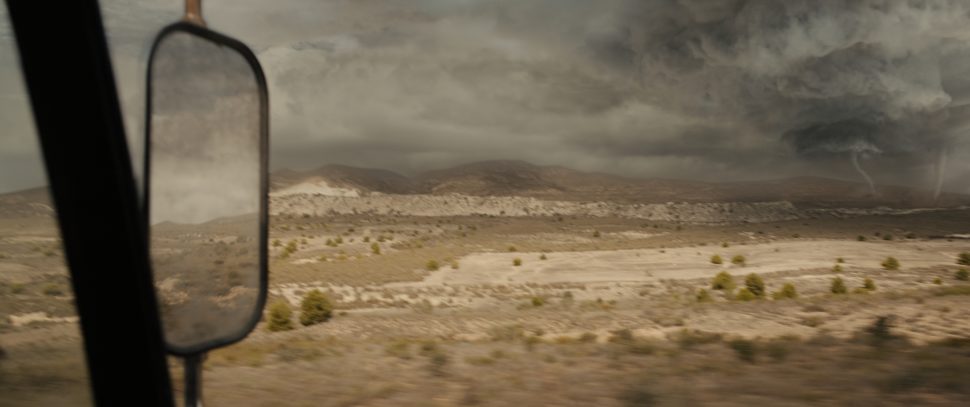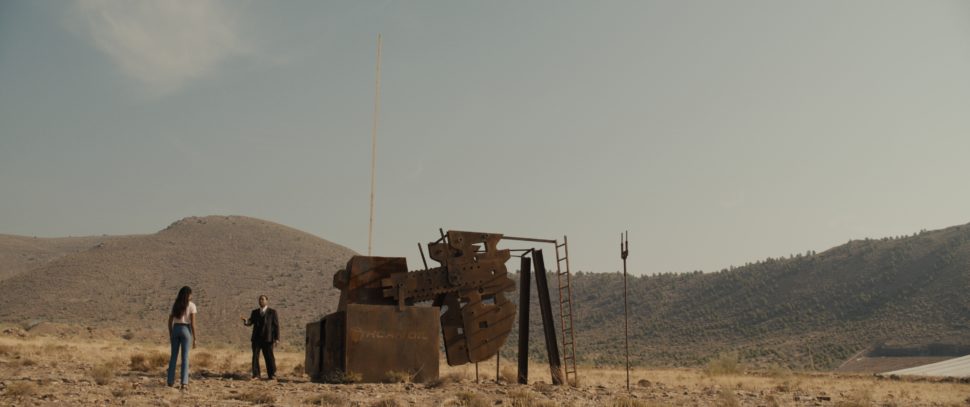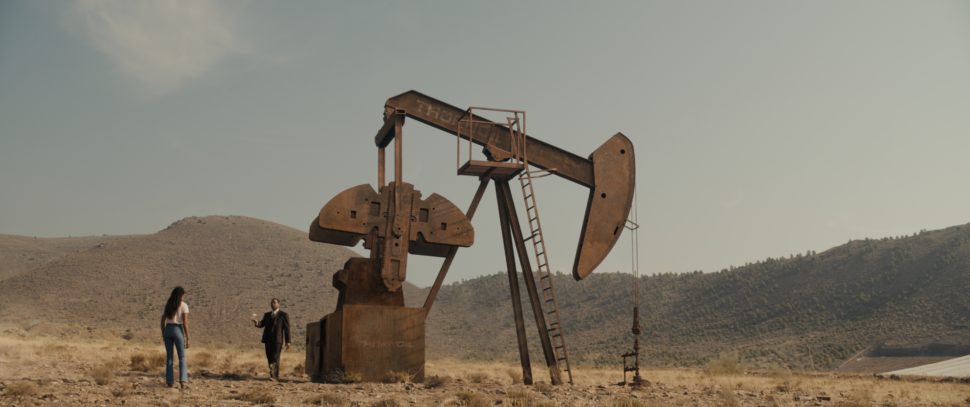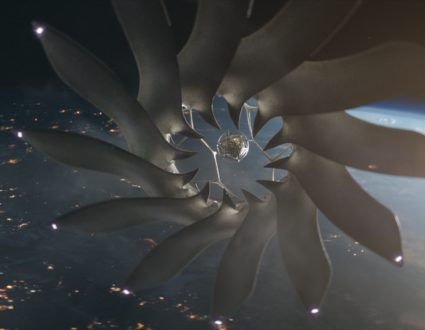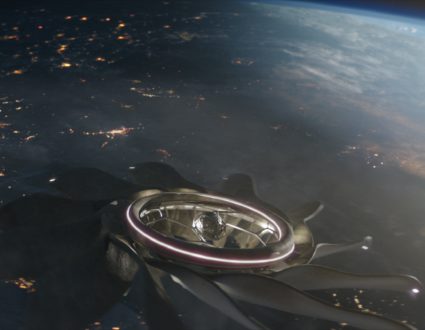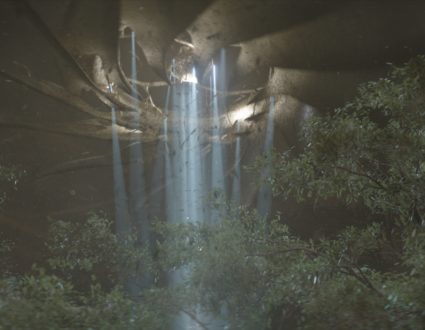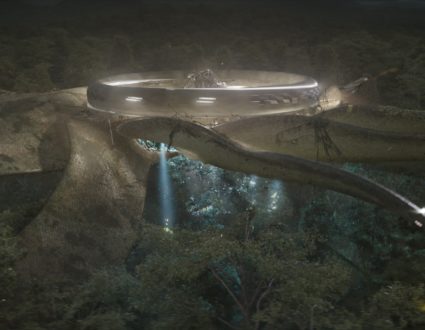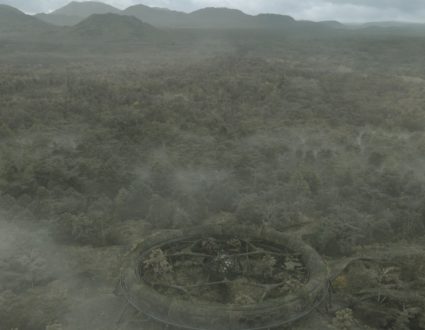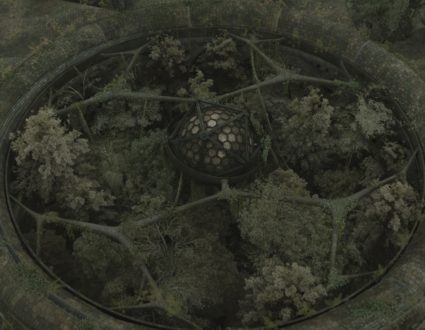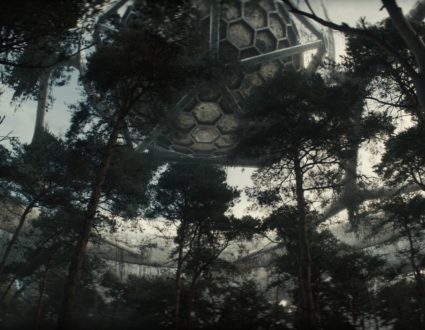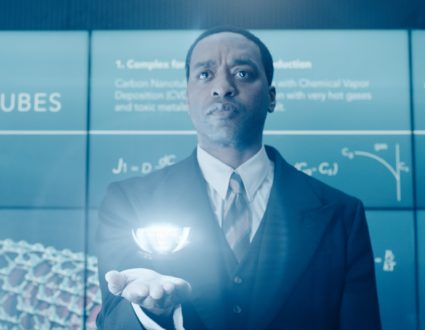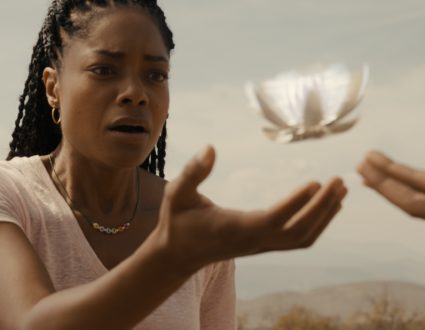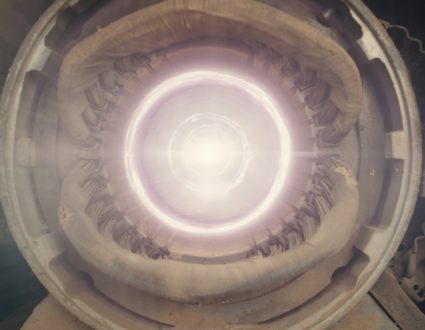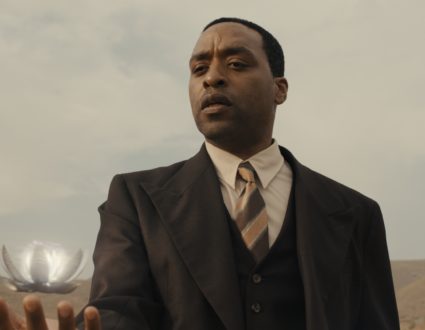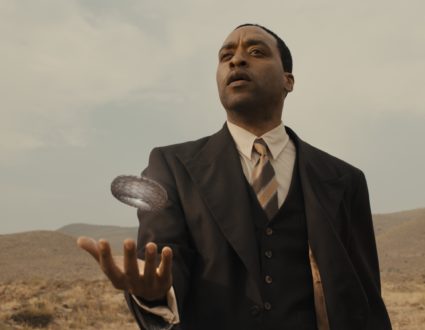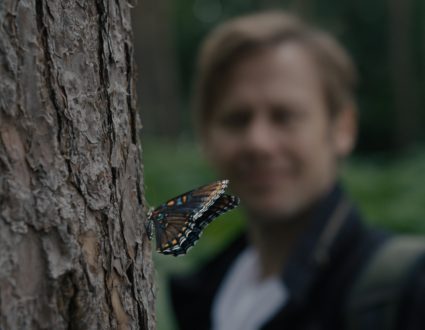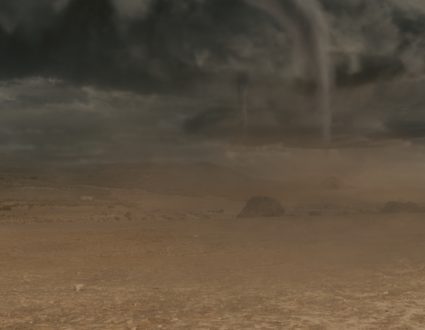An alien (Chiwetel Ejiofor) crashes deep into the oilfields of New Mexico with a mission: he must find the brilliant scientist Justin Falls (Naomie Harris), the one woman on earth who can help save his species. Even as he struggles to adapt to our world and to become more “human,” her faith in humanity couldn’t be lower. An unlikely duo, together they discover that in order to save his world, they must first save ours. An inspired continuation of the novel by Walter Tevis and the iconic 1976 film starring David Bowie.
Cinesite’s team created around 150 visual effects across 8 of the 10 episodes of the CBS series, The Man Who Fell to Earth, which released on Showtime in the US on 24th April and in the UK on Paramount Plus on 22nd June 2022.
As Faraday and Justin begin their journey together, they are led to a GPS position in the New Mexico desert. A storm forms ominously in the sky overhead before gradually intensifying into a fully-fledged tornado. These tornados, featured throughout three episodes of the series, serve as vital communication portals used by Faraday and Newton (Bill Nighy).
Reference was gathered from footage of rare formations of twin supercells shot by storm chasers in Kansas, with the volumes looking rather like giant cinnamon buns! These massive volumes were recreated in Houdini using a series of smaller volumes. In order to visualise the individual pieces of the larger whole, each smaller volume was assigned a random colour to aid the layout processes; this allowed for art directed shapes on a shot by shot basis. FX TDs then animated groups of mini volumes to create the slowly rotating macro volumes. Additional layers, dust eddies and flying debris detail were added to create a soft, dusty finish which closely matched the atmospheric look of the original Kansas reference footage.

The fact that the show was shot anamorphically presented some additional challenges, since storm cells are high in the sky and stretch for miles. It was necessary in some instances to take some creative liberty with our storm height to accommodate the wide screen framing and ensure story points were visible and positioned in frame where needed.
At the climax of the sequence, as Faraday looks up into the eye of the storm, geometric caustics were used as a visual light motif for the alien energy, subtly refracting light within the rotating funnel. The same light flare motif was used in the creation of the alien lotus cube.
The lotus cube is a cold fusion reactor which Faraday brings with him to Earth, an infinite clean energy source which brings enormous potential benefits to the planet. Cinesite was tasked with bringing it to life. Its on-set form, used as reference for the actors and crew, was as a 3D printed, pocket sized torus which was inspired by a Tokamac reactor torus, complete with tiny cellular holes. The story required it to evolve between several shapes as Faraday holds it in his hand; cube, torus and finally a flower-like shape as it reaches its most powerful fusion state.
The energy bloom as seen in episode 3 naturally invited the exploration of incorporating complementary organic forms into the lotus design. The on-set prop used a Möbius strip, a continuous groove looping the inside to the outside of the torus, which formed a natural starting point for where the energy petals might emerge. Real footage from inside a Tokamac fusion reactor was used to guide the build-up of energy, as well as to inform us about the colour changes, which were built and controlled in comp. As the flower gains strength, its colour subtly shifts from white to pale blue and finally to pink, allowing for the return of our geometric light motif, with its subtle caustic patterns, mimicking symatic waveforms.
The lotus cube design is also echoed in the spaceship, which is revealed in the final episode of the series.
Initially, we see the ship covered with moss, foliage and vines from the Cambodian rainforest. The ship needed to appear as though it had been man-made over many decades, hence the overgrowth from the jungle. Our previous lotus references: scalloped shell shapes and flowers, cellular patterns found in scales, insect hives and snakeskin, found their way into the shapes and textures on the exterior of the spaceship. Production VFX supervisor Simon Carr was also keen to include cuneiform texture on its surface, a form of ancient Middle Eastern writing, made up of shapes, symbols and lines.
The final departure of the ship was a complex task, due to the jungle overgrowth and the interaction needed to free it from the surrounding vegetation. It required many months of development, and ultimately over 250 individual simulations of soil, dust, vines, trees and leaves. The end result makes for a fantastically compelling final shot.

